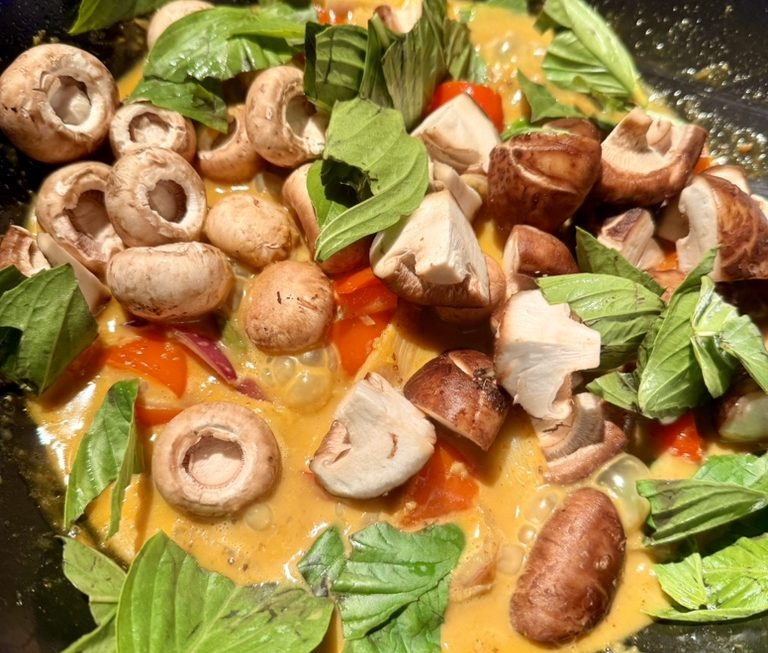Under the keyword ‘Thailand’ you will find what we have written so far about the great Thai cuisine.
Above all, we always explain how to make Thai curry pastes yourself. You don’t have to do this, as there are very good ones to buy (Aroy-D is a popular and good brand – and as always, this non-commercial blog receives nothing for such recommendations). But homemade is even better.
Yellow curry paste is particularly suitable for vegetarian and especially vegan Thai curries, as it is the mildest and therefore does not mask the often more delicate flavours.
You can find our recipe for yellow curry paste here. It traditionally contains prawn paste, which is of course of animal origin. So just leave it out, there is no reasonable substitute, and the curry will still taste great and authentic (if you follow a few more rules).
In addition to the curry paste, you also need coconut milk, of course. Otherwise, we opt for red onions – cut into large pieces – shiitake and button mushrooms, red peppers and green asparagus. Any seasonal vegetables will do. We found a jar of bamboo shoots in the larder and firm tofu in the fridge.

If you rehydrate dried shiitake, you should cut off the stems as they are often very leathery. The water in which the mushrooms were soaked should also be cooked with them, as it adds depth of flavour and umami.
In Thai cuisine, fish sauce replaces the salt. In vegan cooking, soya sauce replaces the fish sauce. Light vinegar and palm sugar (or brown sugar) provide more depth of flavour, just like in a ketchup.
If available, you should also use Thai basil leaves. We leave them whole and only tear up any particularly large specimens. An alternative would be fresh coriander.
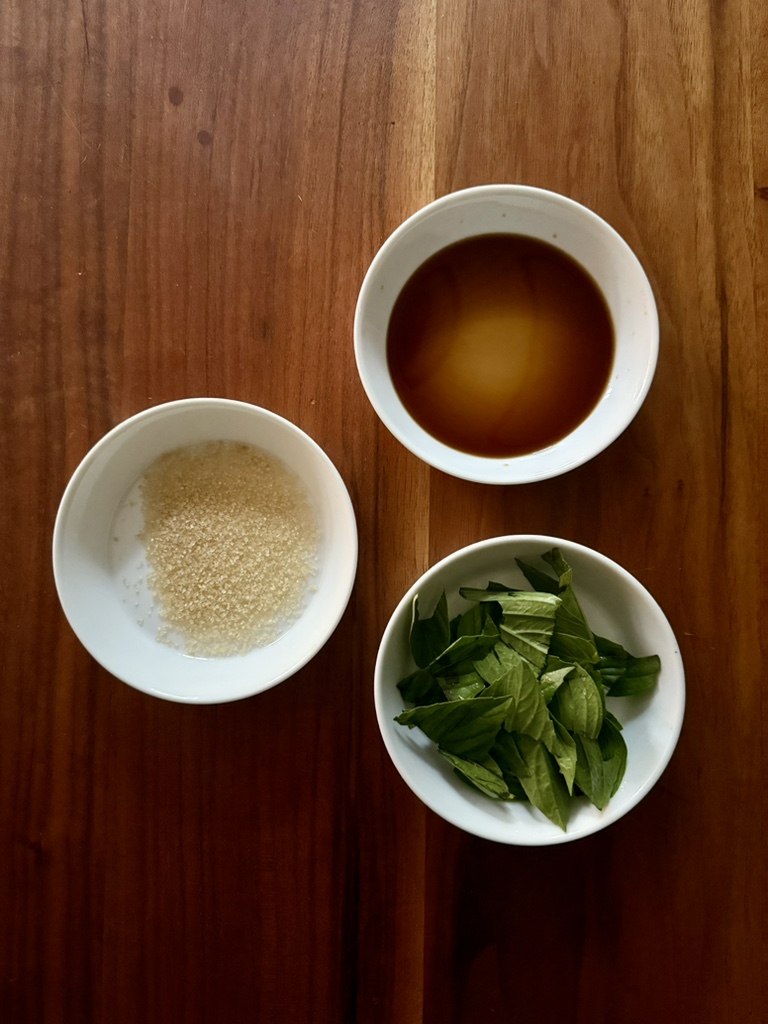
When cooking, the prepping of all ingredients, called mise en place, is very important. When cooking with a wok, it is absolutely essential. When everything is ready, a small amount of coconut milk, around 10% of the total amount, is first brought to the boil over a medium-high heat. The coconut milk should concentrate and even the oil it contains may separate. The curry paste is then boiled in it for about 3 minutes, which fully activates all the flavours it contains (which is a massive amount).
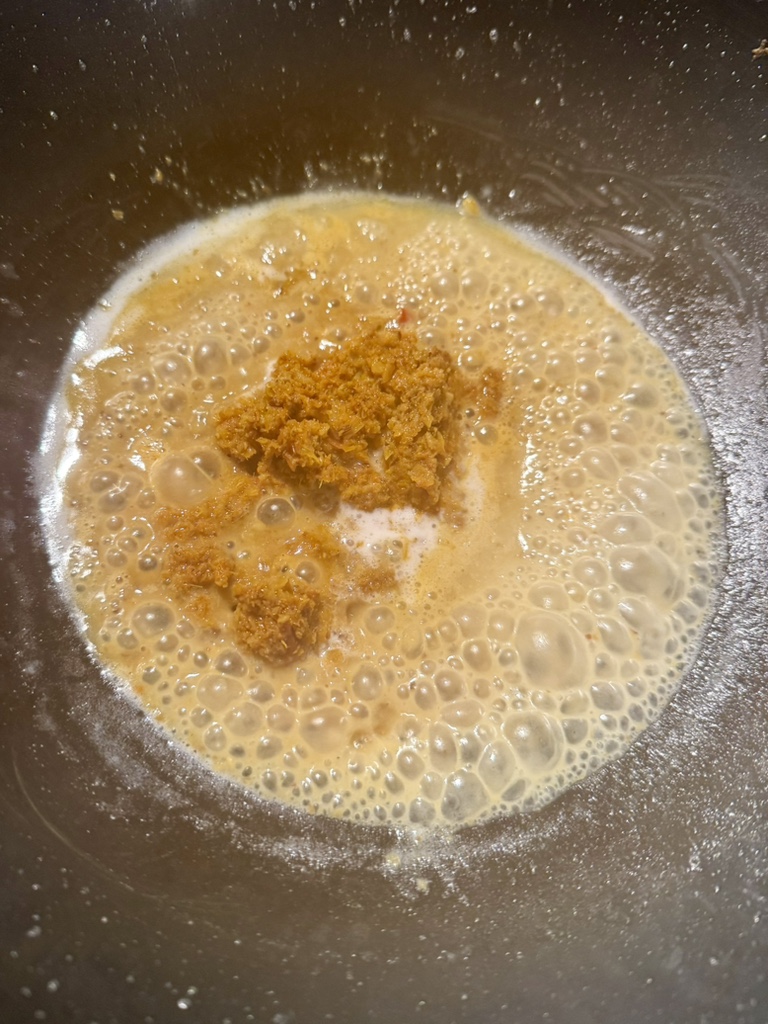
Only then is the rest of the coconut milk added (together with the soaking water from the mushrooms, if available). Add vinegar and sugar for acidity and sweetness and the soy for saltiness. Everything is stirred well and at this point you can adjust the result with the latter ingredients to suit your personal taste.
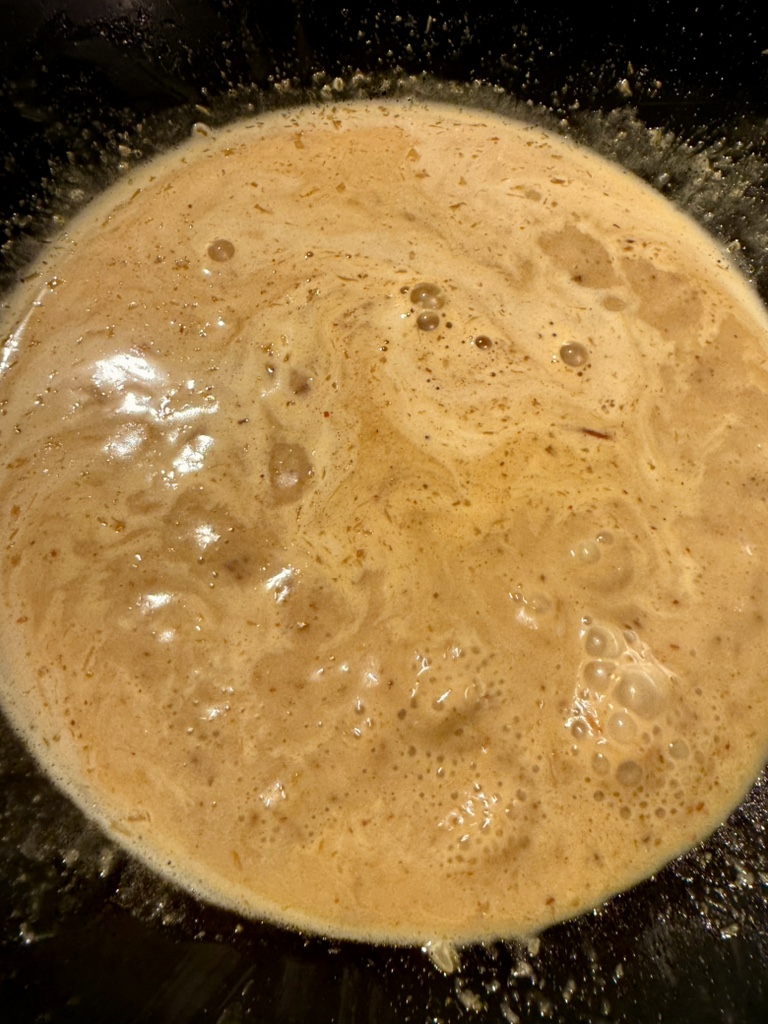
This is not complicated at all, but from here it gets even simpler:
The vegetables are cooked in the curry milk in the order they need to be. Hard vegetables that need to cook longer are added to the wok first, others later.
We give onions and peppers a head start…
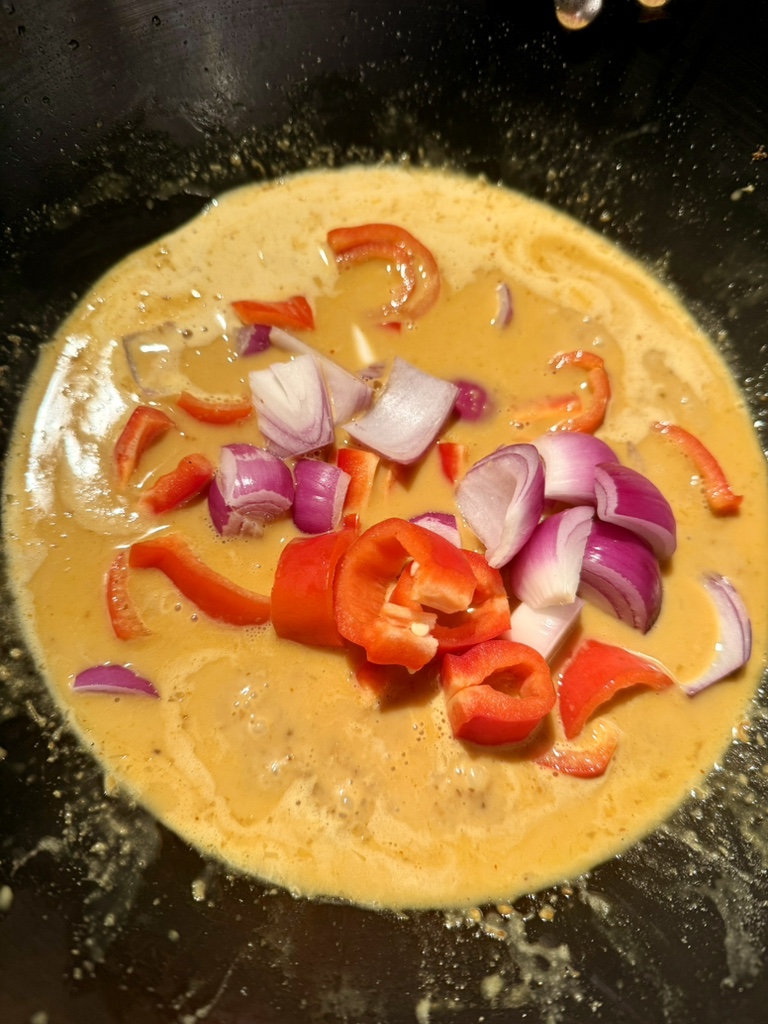
…and follow up with bamboo and asparagus.
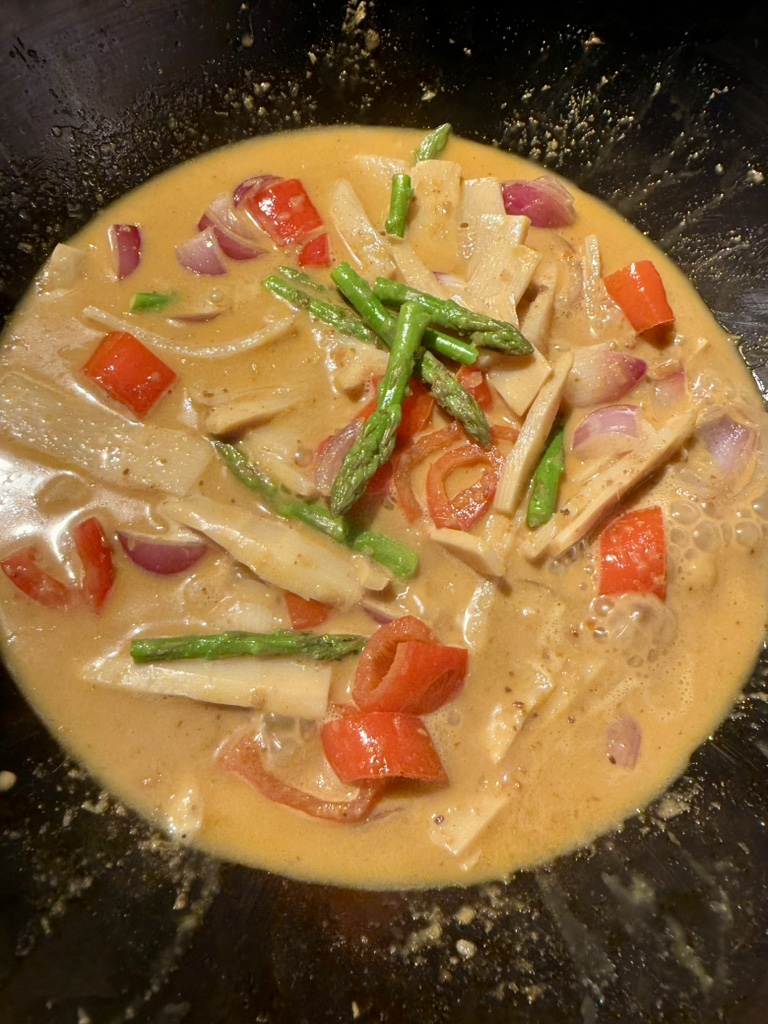
We then cook the mushrooms and season with the curry leaves.
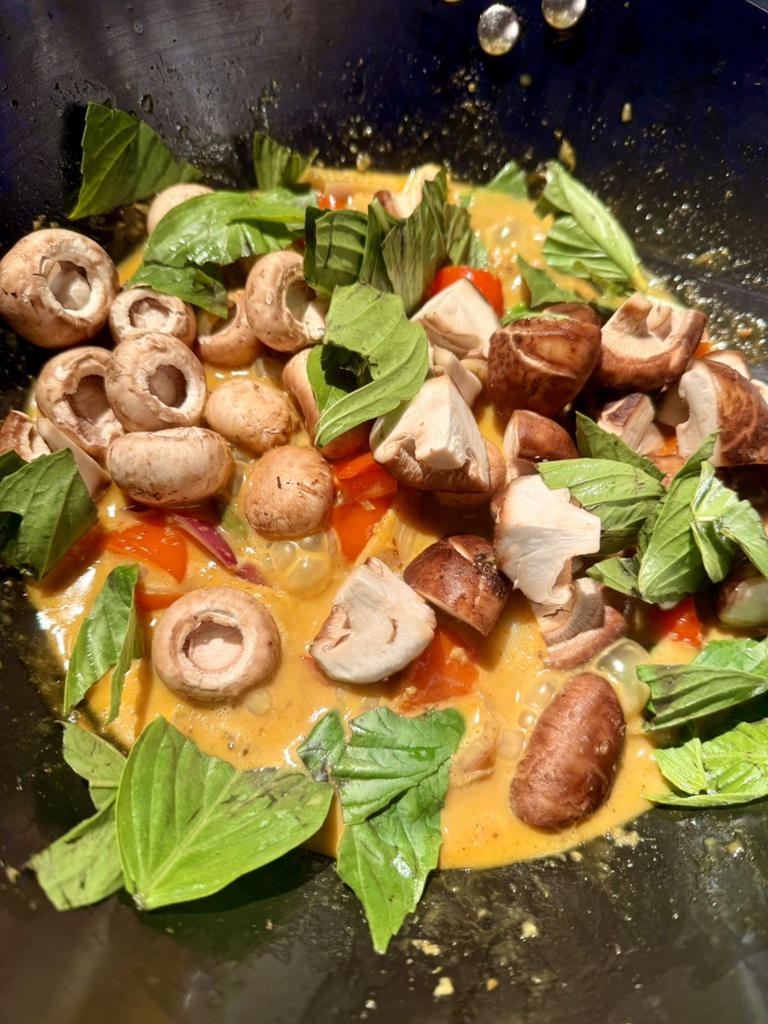
When all the vegetables are cooked, add the tofu – it just needs to take on the flavour of the curry sauce and be warmed through. You should then stop stirring or at best stir very gently so that the tofu is not crushed.
Put jasmine rice in a deep bowl and the curry on the side so that you can enjoy a different mixture of both with each spoonful. First the vegetables and tofu and then the amount of curry milk you want to add.
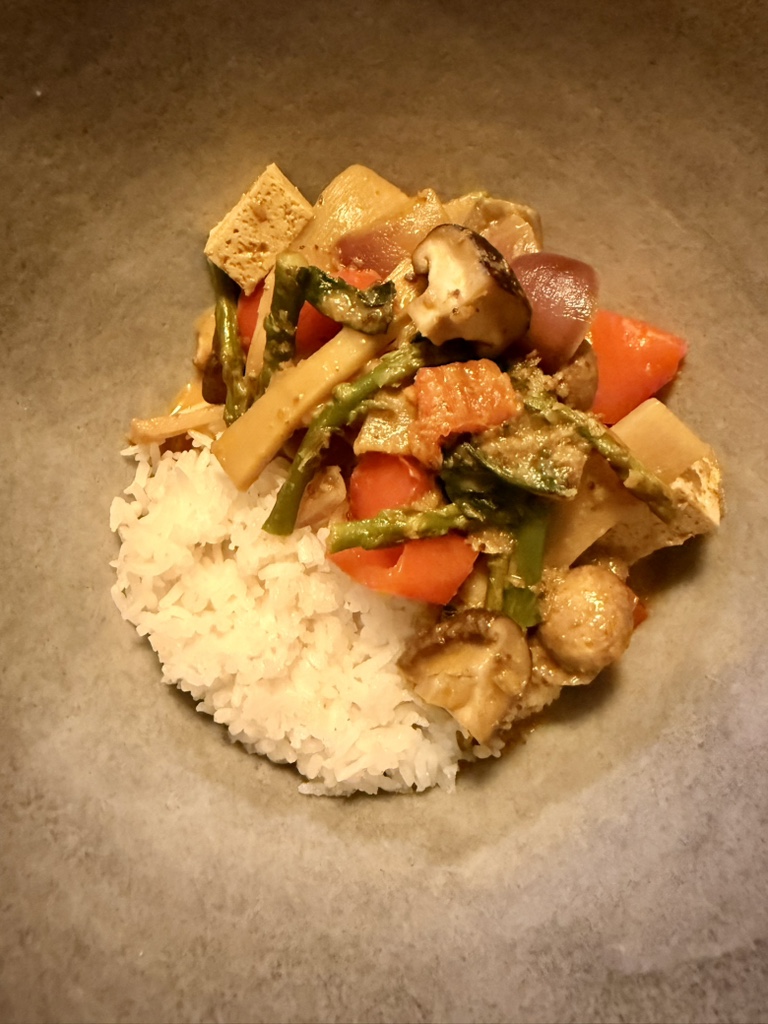
Enjoy.
And may the taste be with you.
Ingredients (for 4 people):
2 – 3 tbsp yellow Thai curry paste (preferably homemade or vegan brands such as Aroy-D)
600 – 800 ml coconut milk (less if soaking water from mushrooms is used)
3 tbsp soy sauce
2 tbsp rice vinegar (alternatively other light-coloured vinegar)
1 tbsp palm sugar (or brown sugar)
Vegetables of your choice, for example:
2 red onions
1 red bell pepper
Some green asparagus
150 g bamboo shoots
2 large handfuls each of shiitake and button mushrooms
Alternative vegetables: (sweet) potatoes, aubergines, chickpeas, young sweetcorn, courgettes, spring onions, etc.
Optional: firm tofu (pressed, diced)
Fresh Thai basil or coriander
As desired:
Lime juice, roasted nuts (cashew, peanut)
